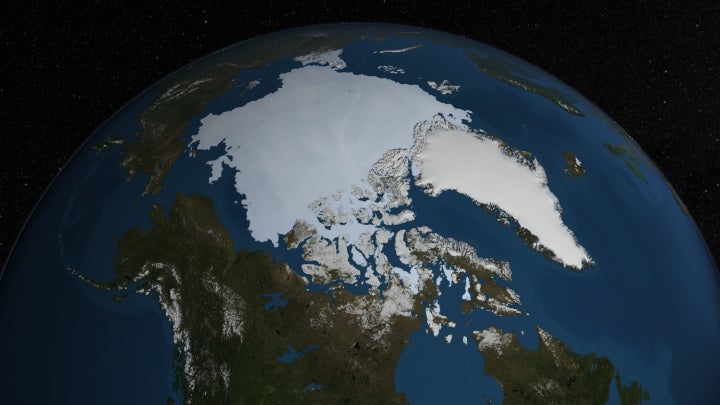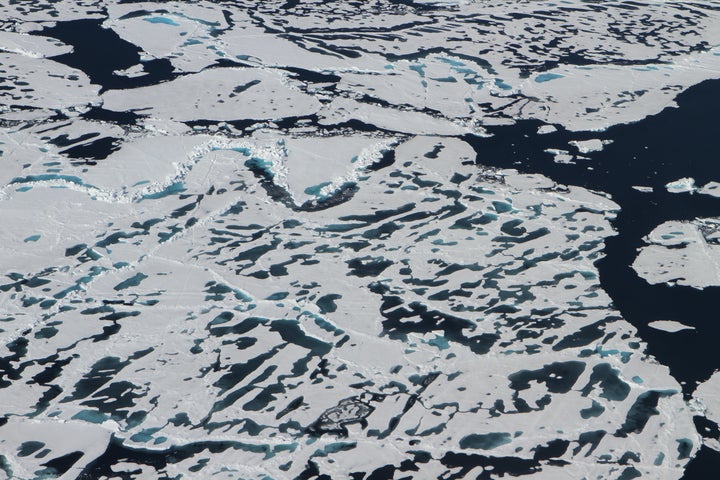A NASA visualisation has revealed the drastic sea ice melting that takes place in the Arctic during the summer months.
While sea ice melting is normal, NASA scientists say that the extent to which it is taking place is now reaching an all-time high.

What’s worse is that these depleted sea ice levels will become the “new normal”
Sea ice scientists at NASA’s Goddard Space Flight Center revealed earlier this month that sea ice levels reached a record-breaking low in March and continued declining through May.
It was only thanks to a slower melt in June that means the decline won’t be setting a new record on last year.
“Even when it’s likely that we won’t have a record low, the sea ice is not showing any kind of recovery. It’s still in a continued decline over the long term,” said Walt Meier from Goddard.

“It’s just not going to be as extreme as other years because the weather conditions in the Arctic were not as extreme as in other years.”
One of the factors that makes predicting this decline difficult is the weather during those summer months.
The sea ice is incredibly vulnerable from May onwards so any freak weather patterns can make predicting the total decline incredibly hard. A perfect example of this was the slowing that took place in June.
“This year is a great case study in showing how important the weather conditions are during the summer, especially in June and July, when you have 24 hours of sunlight and the sun is high in the sky in the Arctic,” Meier said.
NASA’s next great challenge is using satellites to determine not just the area of the sea ice, but also the thickness of it.
We have a good handle on the sea ice area change,” said Thorsten Markus, Goddard’s cryosphere lab chief. “We have very limited knowledge how thick it is.”
NASA plans to use its climate satellite ICESat-2 to determine this. It will fire lasers down onto the surface of the ice allowing the team to get a precise reading of the height of the Earth’s surface. They’ll then be able to use a number of calculations to determine the exact thickness of the ice below.
“If we want to estimate mass changes of sea ice, or increased melting, we need the sea ice thickness,” Markus said. “It’s critically important to understanding the changes in the Arctic.”
